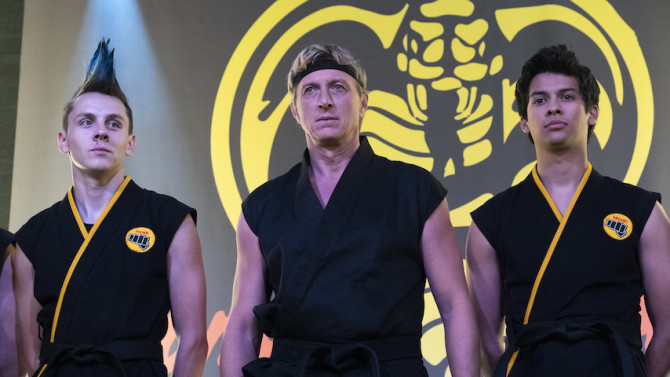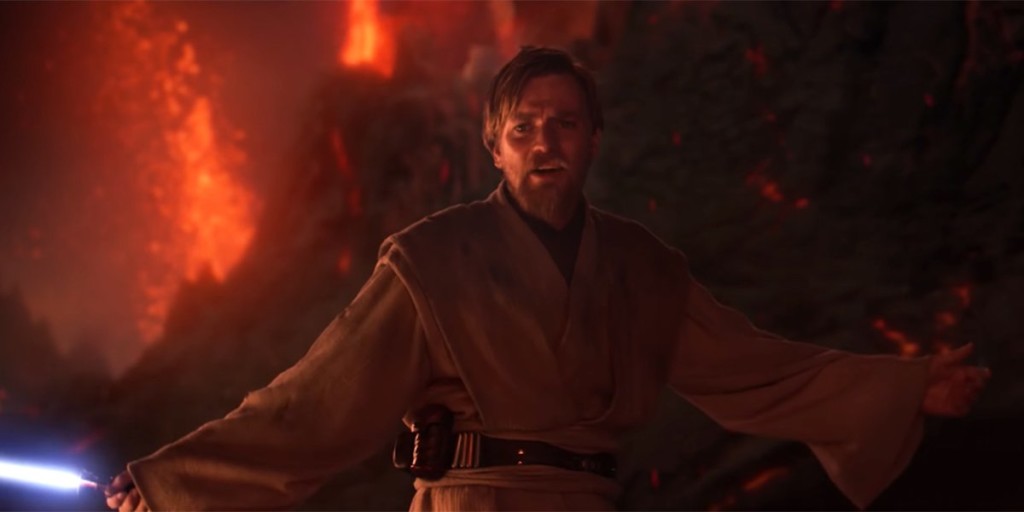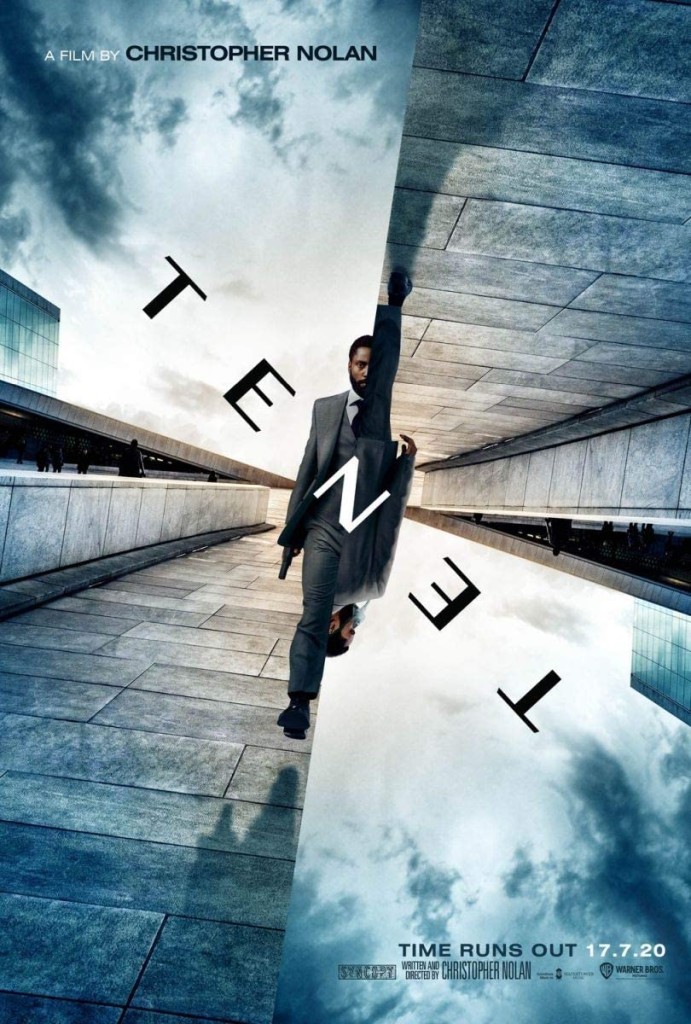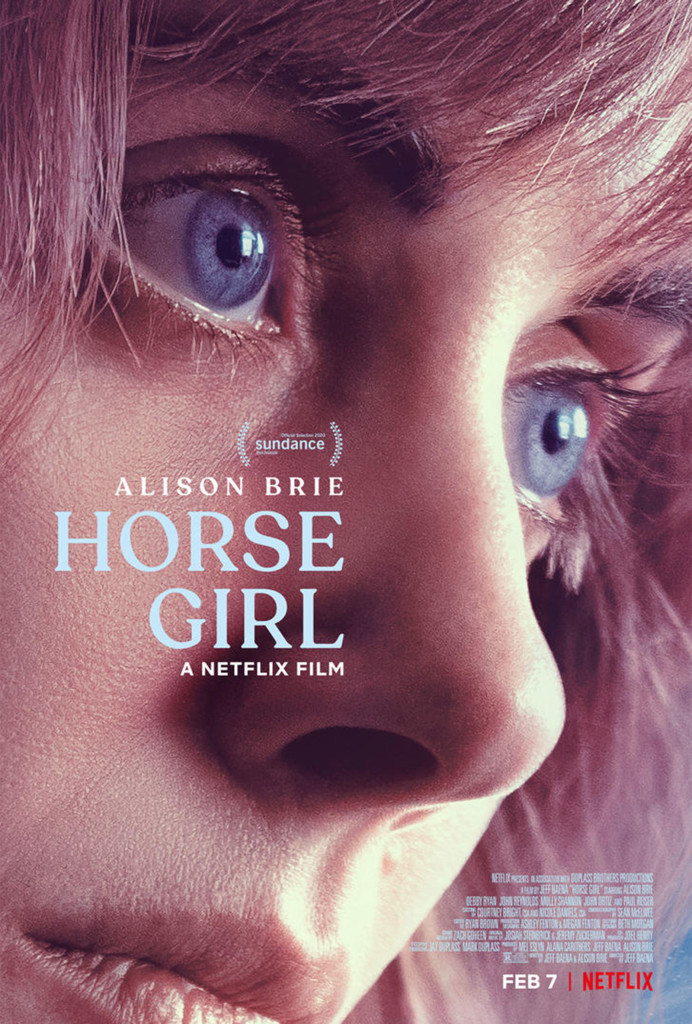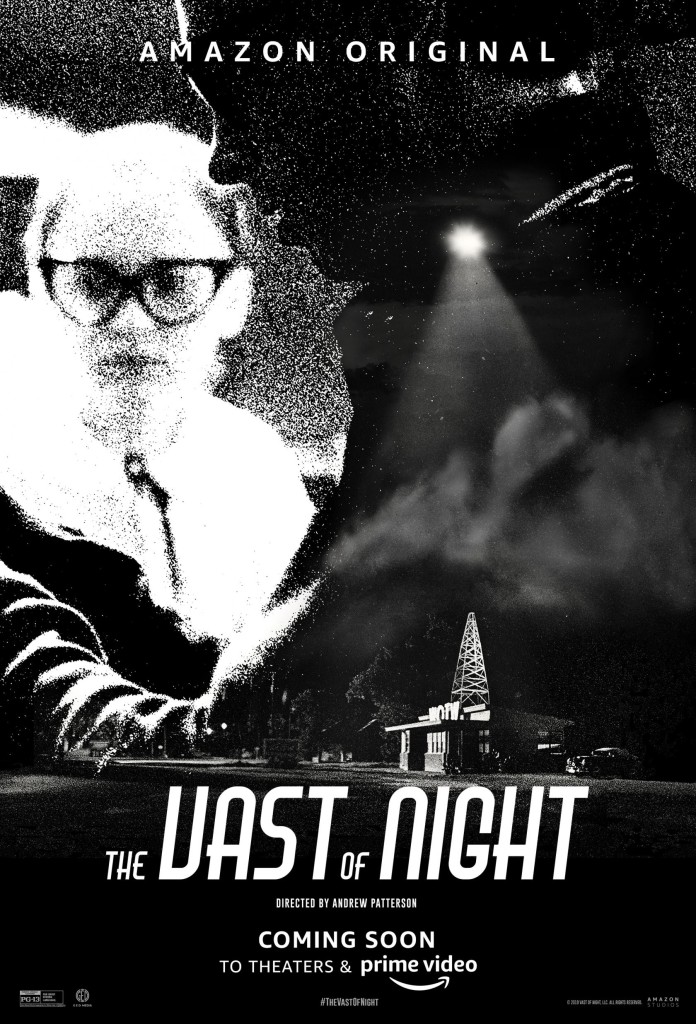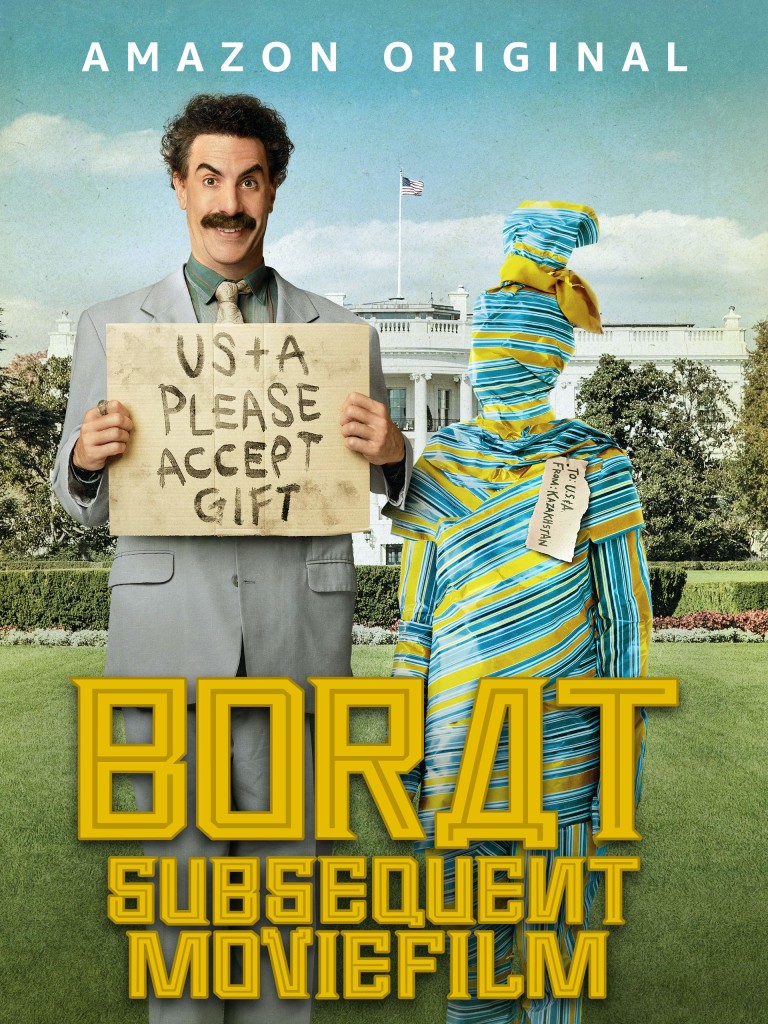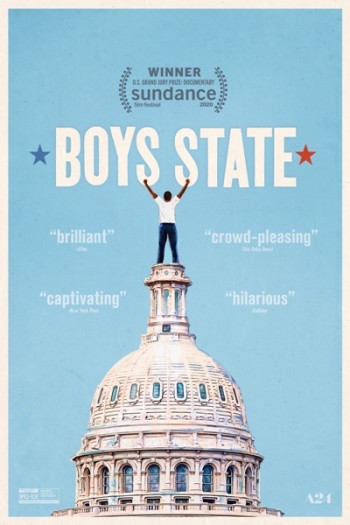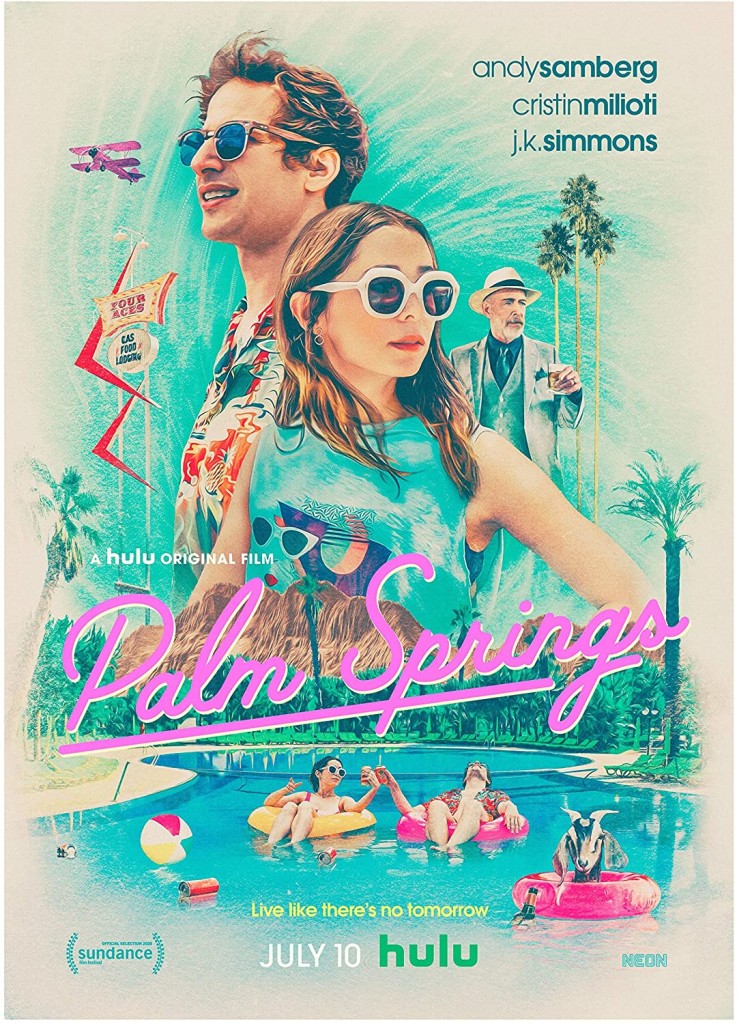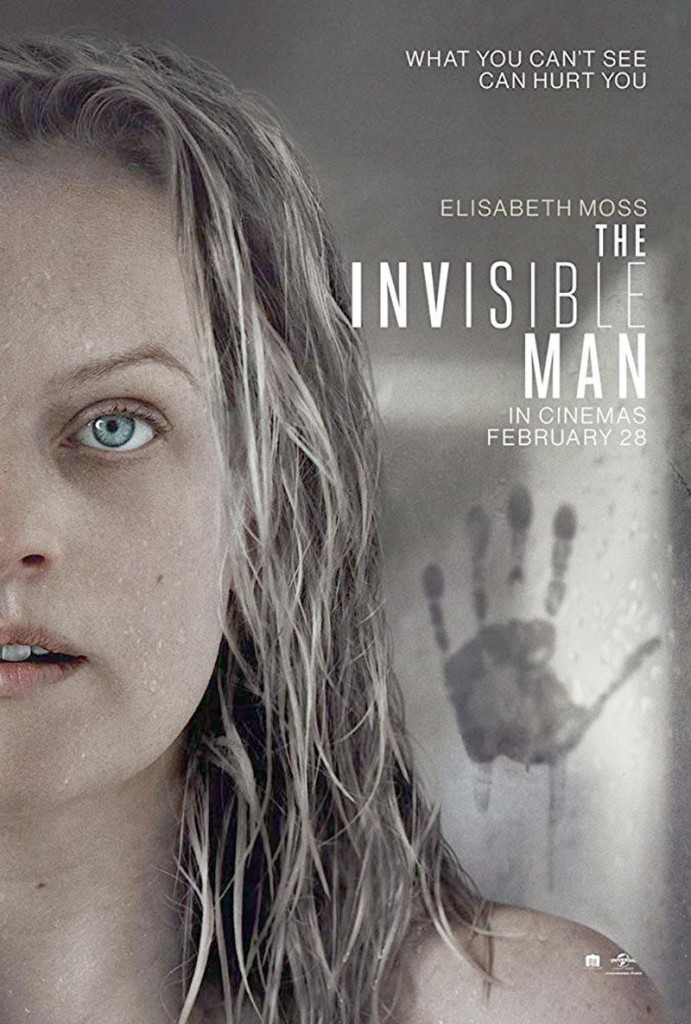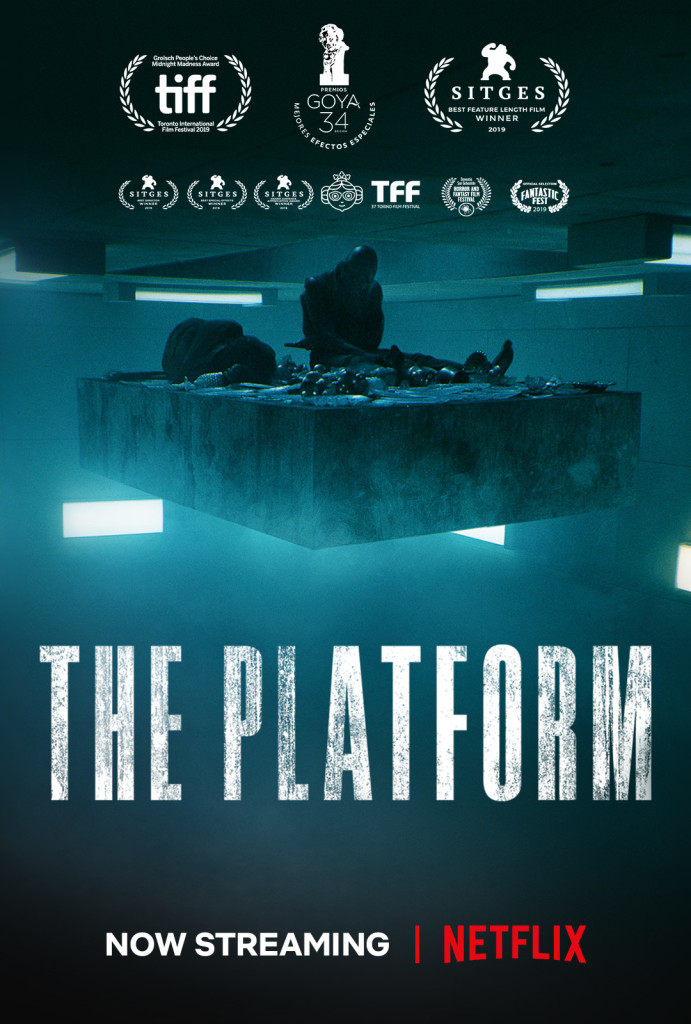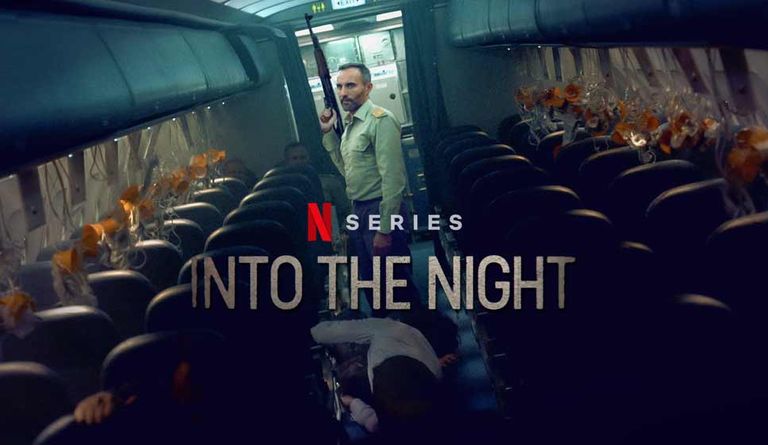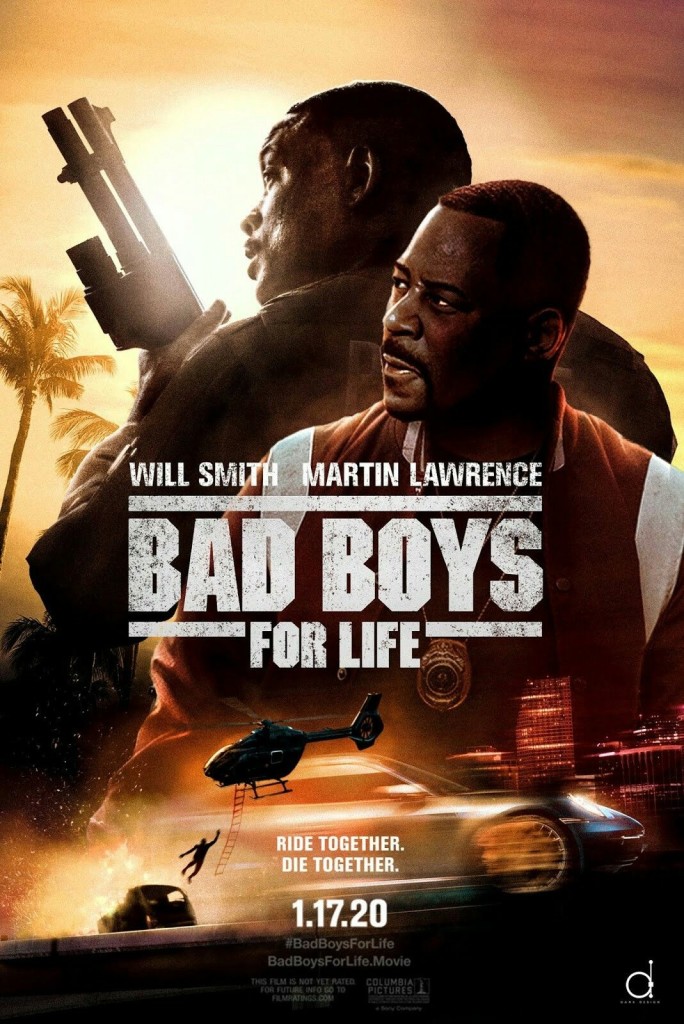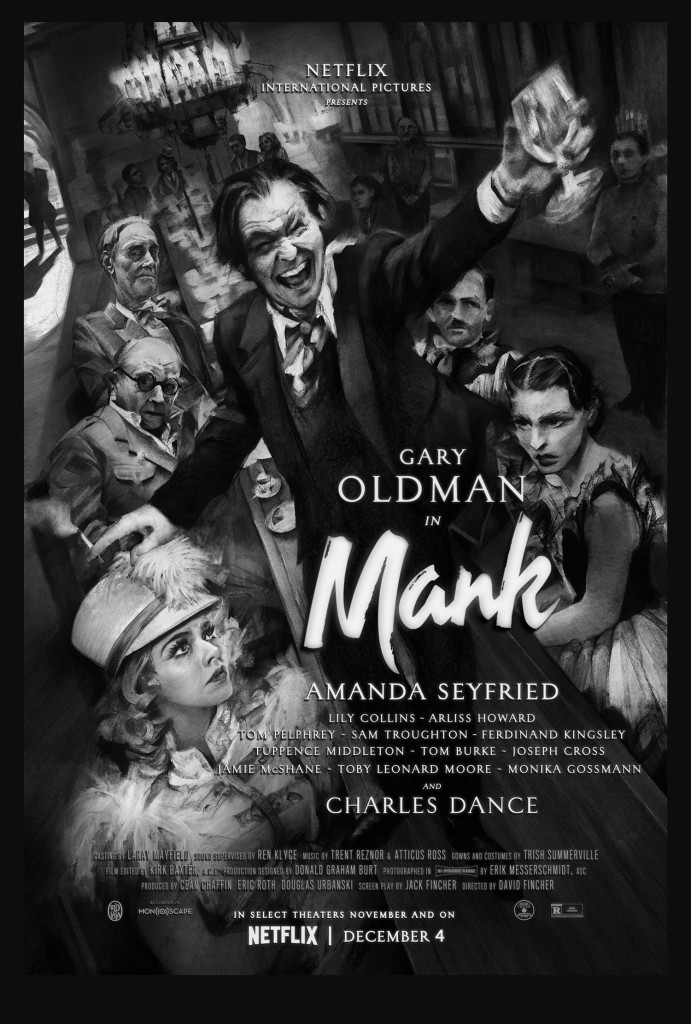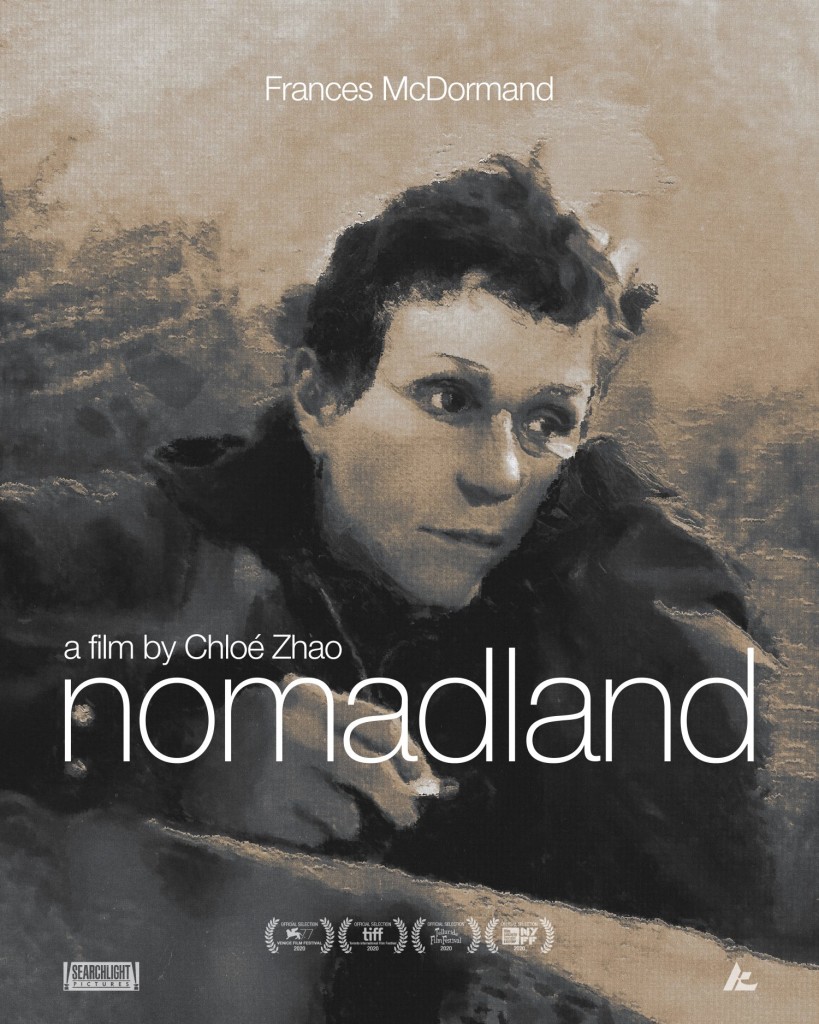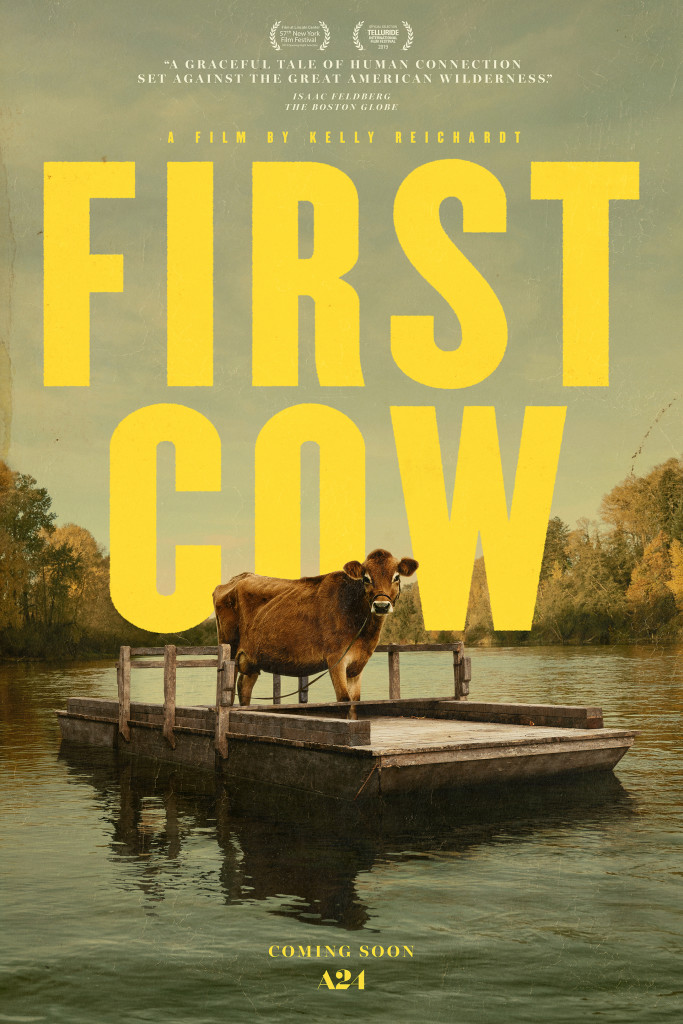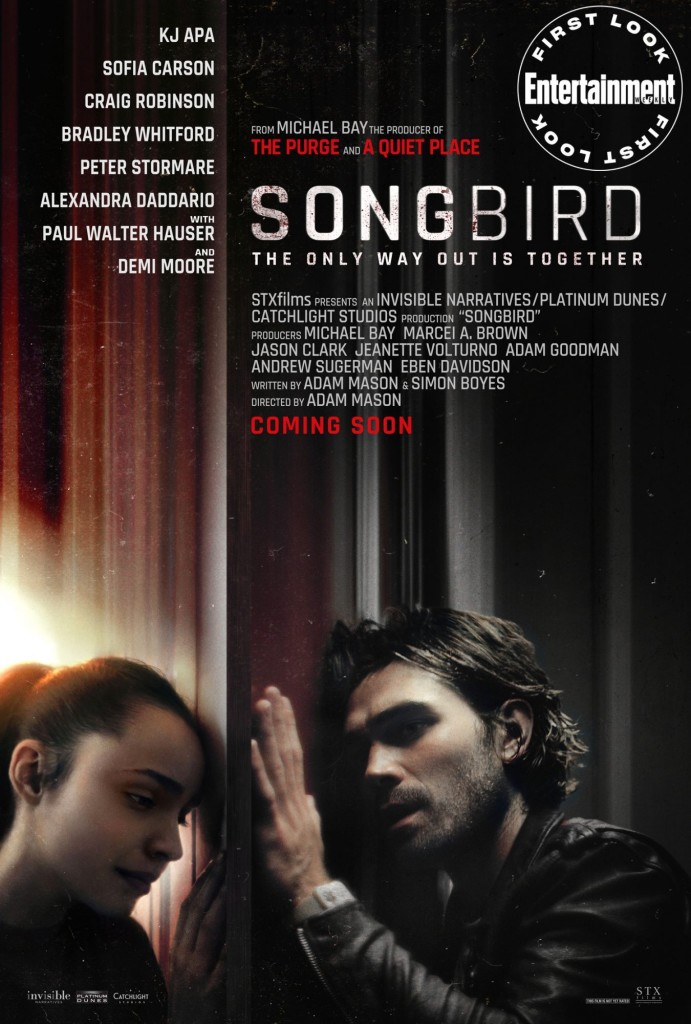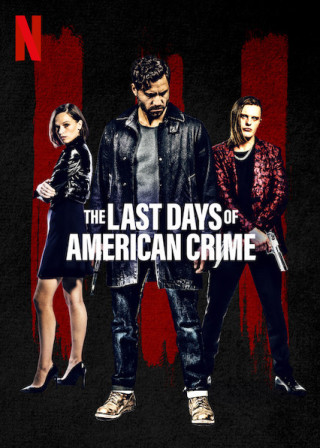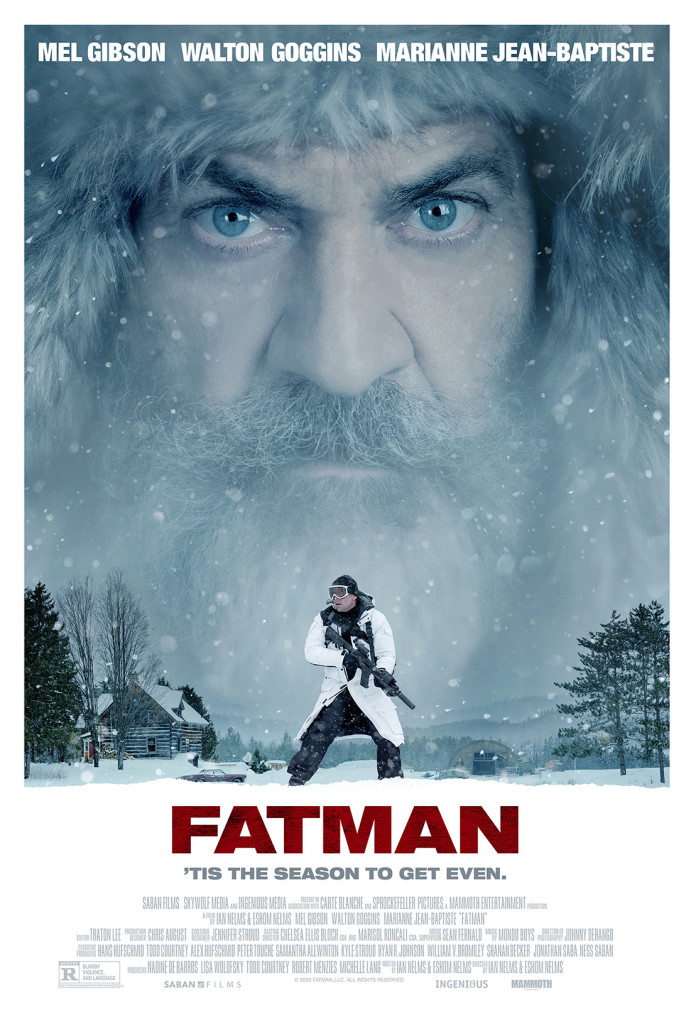Genre: Horror
Premise: (from Black List) After being haunted by a terrifying entity, a twelve-year-old boy teams up with his eccentric uncle and three other misfits to form their own ghost club, investigating all the paranormal sites in town so that he can find and confront the ghost that’s tormenting him.
About: Today’s script finished Top 10 on the 2020 Black List. It is adapted from the novel by Craig Davidson, who’s been compared to Chuck Palahniuk. Davidson isn’t afraid to get dirty when promoting his work. After releasing a novel in 2007 called The Fighter, Davidson participated in a fully sanctioned Canadian boxing match against Toronto poet Michael Knox (he lost) and then did the same for the novel’s US release, boxing against Jonathan Ames. He lost again. Talk about doing everything you can to get your work out there!
Writers: Steve Desmond & Michael Sherman (based on the 2019 novel by Craig Davidson)
Details: 110 pages
Back to the Future is about as perfect a movie as I’ve ever seen. But when I look back at it, not with the fondness of nostalgia, but with the critical eye of a screenwriting enthusiast, it has its fair share of odd choices. For starters, a 17 year old boy is best friends with a weird 65 year old outcast scientist. That may not seem strange at first glance. But picture yourself reading that script for the first time before the movie was made. Wouldn’t we be asking, in what reality would a cool high school rocker kid be friends with a weird old scientist? If I was giving notes on that script, I would tell the writer, “This relationship isn’t believable.” And yet we all accepted it without question.
On top of that, the core of the story involves a woman trying to sex up her son. Granted, she doesn’t know it’s her son. But we do. Why do we accept this? Why do we laugh instead of cringe? It speaks to the randomness of creativity. Sometimes, as artists, we must go with our gut even if we know what we’re writing isn’t supposed to work. I bring this up because, today, we have a script that reminds me a lot of Back to the Future. It’s about kids befriending much older adults and going on haunted excursions together. Will it work? Only one way to find out.
Jake is 12 years old when something big, dark and scary appears above his bed. It is this experience that sends Jake to get help from his Uncle Calvin, an expert in the occult. In fact, Calvin even owns an occult store (called the Occultorium). When Jake tells Calvin about what he witnessed, Calvin becomes convinced that Jake is being visited by a wandering ghost.
Meanwhile, a Native American family moves into town and Jake befriends the boy in the family, 12 year old Billy, and Billy’s skater girl sister, 14 year old Dove. The two join up with Calvin’s co-worker, Lexington, and start investigating haunted places around town where Jake’s evil bedside ghost may be hiding.
First is an old train tunnel. Calvin, who’s way too into these ghost spots for a 40-something man, tells the story of a kid who went into the tunnel at the urging of some mean kids only to get clocked and killed by a train. It is said that the spirt of the kid still lingers here. And when Jake goes into the tunnel to check, he momentarily sees the boy, and runs for his life. Afterwards, however, Jake isn’t sure if he really saw something or it was just his imagination.
Next, they go to a sunken car in a lake. In one of the more blatant examples of child endangerment, Calvin sends Jake underwater to see if the ghost is in the car. This after Calvin explains that a young couple’s car crashed into the lake and the girl died. It is said that the driver still haunts the lake, looking for her. But alas, they don’t find Jake’s bedside ghost here either.
Finally, they head to an old house that’s halfway burned down. Calvin explains that a couple lived here and let a man in who wanted to use their phone, only to have him take the wife at knife-point and slice her neck. She would later die and the husband ended up going insane, which ended in him burning the house down with him in it.
But this time, Jake doesn’t get a chance to go inside. That’s because something happens to Calvin after he tells the story. He goes into a deep haze and starts knocking on the front door. Knock. Knock. Knock. Knock. KNOCK. KNOCK. KNOCK. KNOCK. KNOCK-KNOCK-KNOCK-KNOCK-KNOCK-KNOCK. Freaked out, the kids all run away. And it is only when Jake tells his mother what happened, that she explains the true story behind her brother, a story that will make everyone reevaluate the three haunted sights they visited.
Saturday Night Ghost Club is one of those scripts that’s hard to get a handle on initially, like a UFC fighter who you’re still trying to gauge. Is he a boxer? A martial-artist? A grappler? For the first 60 pages of Saturday Night Ghost Club, I thought I was reading a cheesy kids movie about ghost-hunting.
But as the script hits its second half, something changes. It starts with Dove, who we realize is way more complex than initially presented. It turns out she’s highly bi-polar, capable of going on manic rants, and making a routine of taking the bus out of town as far as it will take her before her mom retrieves her for the 20th time.
One of the primary differences between amateur and pro work is character depth. Character depth can be explored in many different ways. It can be as simple as a character flaw. It can be someone fighting their past. It can be an internal battle where someone is fighting depression or addiction. But character depth is really anything that goes below the surface. That was my issue with the first half of this script. The kids were all surface-level. Calvin was surface-level. The mom was surface-level.
Which is why it was so strange that, all of a sudden, Saturday Night Ghost Club became an intense character piece, to the point where I was getting really emotional at the end. (Spoilers) As it turns out, these haunted places they’ve been visiting were not the locations of random acts of haunting, but rather connected to Calvin himself, who, it turns out, lost his wife in the home that was burned. Who crashed their car into the lake as he rushed her to the hospital. Who had his first kiss with her in the train tunnel.
Which makes Calvin one of the most tragic figures on this year’s Black List. The poor guy is so traumatized by his loss that he’s simply blocked it out. Replaced it with this goofy endeavor of “hunting” for “ghosts.” As long as he’s coming up with potions to defeat slime-gobblers, he doesn’t have to face the truth. And that was damn heartbreaking!
Ahh, but all is not perfect. I’m not fond of the late twist that requires your hero to forget everything about his life. I’ve encountered that more times than you’d think. And while they do a pretty good job of it here, it’s still a tough sell. Even if you say Calvin was in a coma and the doctors decided not to tell him the truth cause they were afraid it would be too much to handle, it still comes off as convenient for the movie that this major character happens to forget everything that resulted in the script’s cool last second twist.
Not to mention, if this guy is as mentally unstable as they’re saying, why are you allowing your 12 year old kid to hang out with them 18 hours a day? There’s no one who knows how mentally deranged Calvin is more than Jake’s mom. Yet she’s got no problem letting the two hang together.
Then again, one of the greatest horror-thrillers of all time, Psycho, uses this conceit, as Norman Bates has such an extreme mental break that he occasionally thinks he’s his dead mother. I’m just not sure you can pull that off in 2021 the way you could back then. People know so much more about mental health these days that you have to treat the subject matter with an additional amount of care. But who knows? Even as I was questioning the logic of it, I was experiencing an emotional reaction. So that means it worked on some level.
It took me a while to get into this one. I thought for sure I was going to give it a “wasn’t for me.” But it rounded that last corner like a bat out of hell and sped its way to a solid “worth the read.”
[ ] What the hell did I just read?
[ ] wasn’t for me
[x] worth the read
[ ] impressive
[ ] genius
What I learned: One of my fears going into this turned out to be a valid. It didn’t feel right that the club consisted of kids AND adults. Why? Because when you have adults around, YOU FEEL SAFE. That was a big reason the first half of the script wasn’t working for me. We’d go to these haunted places, put our kids into scary situations, but always with adults a few feet away. Now that I’ve read the whole thing and know that the story is about Calvin, I realize he has to be there. But if you’re making a scary movie, you need your big scares to actually be scary. And if you’re using an element that reassures rather than frightens, you might want to think about if that’s a good idea. The scariest movie of the last five years, “It,” is terrifying for that very reason – the kids are all alone when they encounter the scares.
I want you to take a time machine back to 2015 and try to imagine a scenario where William Zabka, the famous bully from the original Karate Kid movie, would have bragging rights over George Clooney about something that involved entertainment. Had you floated such a theory at the time, you would’ve been locked up by the Hollywood police! And yet, that’s exactly what happened, with Zabka leading Cobra Kai to the top slot on Netflix while Clooney and his rudderless sci-fi adjacent flick, The Midnight Sky, lags a couple of spots behind.
And in a world of such division, can we all universally agree that Cobra Kai is the greatest show ever on television? So it’s settled, then? Good. The amount of glorious cheese on display in this show is enough to keep a small country fed for a decade. I love how the writers unapologetically inject a dozen villains into the mix. Not to mention, the budget is clearly bigger now that they’re at Netflix. We’ve got flashbacks to Vietnam. Twisted Sister concerts. Heck, they were even able to send Daniel LaRusso to Japan! Cobra Kai for life!
From brass knuckles to brass tacks, last year was supposed to be a big transition for me to producing but, like a lot of folks, I was blindsided by a little illness known as Covid. But like any great pandemic does, the time sidelined allowed me to reflect and plan and now I feel even more excited about producing than ever.
The first phase of my plan will be announcing the finalists for The Last Great Screenplay Contest. That is going to happen next Friday (Jan 15), although there’s an off-chance I’ll post the finalists on Monday. I have been VERY happy with the contest. As I’ve mentioned before, my hesitation to doing contests is always the fear of spending hundreds of hours reading scripts only to come up with an average winner. That’s happened to me before and it sucked.
That HAS NOT BEEN THE CASE this time. In fact, I already have two finalists picked, either one of which I’d be happy awarding the gold medal to and, more importantly, both are highly marketable and wouldn’t cost a ton of $$ to make. In fact, in one of them, I think I just found the next John McClane. I also have a third probable finalist that, while not as marketable as the other two, is extremely well-written and I love the writer. On top of THAT I’ve gotten lucky because, over the last two months, I’ve received several consultation scripts from REALLY STRONG WRITERS. One of those scripts is a sure-thing movie (that comes from an Amateur Showdown winner, no less!) and the other comes from an amazing writer I will, no doubt, be working with for the rest of my career. All in all, I’ll be moving into 2021 with up to 7 great scripts I’ll be pushing around town, and that is something I did not have in 2020. So you’re definitely going to want to stay tuned next week to see the finalists. Then, the following Monday, I’ll announce the winner.
What does this mean for Scriptshadow? Well, if there’s anything 2020 has taught us, it’s that nothing’s set in stone. You have to be flexible. So rest assured, Scriptshadow is going to keep running. In what capacity, I’m not sure. Many of my decisions will be dictated by how busy I get on the producing end. But concessions will have to be made. For example, there might be more Mish-Mash Mondays, since they take less time to put together. Instead of reading a script and reviewing it, I might review something I watched, only because it saves me the time of having to read a script.
There is a scenario whereby, at the end of 2021, I’m only posting once a week. But that doesn’t mean the fun is over by a long shot. I’m thinking of doing another screenplay writing challenge. Last year we did it in two weeks? Which freaked some people out. I want to do one where you write a script in a month. A month is only 3.5 pages a day. Which is totally manageable. So start thinking of concepts NOW. Share ideas with your friends and get a consensus on which concept is the best one. You can always purchase my logline evaluation consult which includes an analysis, logline rewrite, and 1-10 rating. I tell everyone that unless your idea gets, at least, a 7 out of 10, don’t write the script (e-mail “logline” to carsonreeves1@gmail.com to get a consult – they’re only $25).
Finally, some advice for 2021. I recently had some interesting insights into four screenwriters’ lives. Two of those were Mayhem and Angela, who both finished in the top 5 of the Black List, and the other two were talented screenwriters who have not yet made it into the industry. What struck me about the difference between these sets of writers was that the first two, Mayhem and Angela, aggressively put their material out on the internet. Whether it was here at Scriptshadow, on Reddit boards, or their own website, they were all about exposing their writing. What that did is it allowed them to get a ton of feedback, which they could use to get better. They went through that cycle over and over again until their material was up to professional standards. And they were both rewarded for it.
Meanwhile, these other two writers, who I would argue are more naturally gifted than Mayhem and Angela, don’t put their stuff out there at all. Which means a couple of things. One, they’re not getting that constant stream of feedback which helps them get better. But, more importantly, if you’re not exposing your work, people aren’t seeing how talented you are. And here’s where it gets interesting. Without positive reinforcement, these writers were clueless to how amazing they were. They’re a 9 out of 10. But the lack of feedback has made them believe they’re a 5 out of 10. And the problem with that is that you’re not as motivated to write when you lack confidence. I’ve watched a lot of screenwriting careers end for this very reason.
All of this is to say, I encourage you to be more courageous in 2021 and to get your work out onto the internet. It’s not 1998 anymore. Back then, there was a strategic advantage to not exposing your work. If your script got out there, it was harder for your agent to create a sense of mystery and excitement about the script. But today, that doesn’t matter anymore. As everyone here knows, Headhunter, which finished number 1 on the Black List, appeared on this site a year earlier. And it didn’t hurt the script at all.
I want all of you to be the best possible screenwriters you can be. To do that, you need as much feedback as possible. You can’t improve in a bubble. You just can’t. And even if you could, it’s still beneficial to get exposure and build fans of your writing. And that can only happen if you get your stuff out there. So GO DO IT!
Two more notes. I will announce the next Amateur Showdown genre on Monday, the 11th (haven’t picked one yet so I’m open to suggestions in the comments). So be ready for that. And this Thursday, I’m bringing back the 10 Screenwriting Lessons series as I give you 10 Screenwriting Tips From Cobra Kai!
HERE’S TO A GREAT SCREENWRITING 2021!
Hello everyone. I wasn’t going to post anything this week but after watching Wonder Woman 1984, I couldn’t help myself. By the way, this is a stream-of-consciousness post, so I’m sorry in advance if it’s as nonsensical as the movie I just saw. Wonder Woman 1984 is one of the worst superhero movies I’ve ever watched. In fact, it’s so bad that I can’t think of any superhero movie that’s worse at the moment. Literally, the first 70 minutes of the movie is setup. We’re talking blatant 100% exposition setup. Diane meets Steve again. Some geeky girl finds a wish machine. Some oil magnate goes looking for the wish machine. For some reason, we go to Saudi Arabia on an invisible plane. Saudi Arabia then has a wall around it. I mean this was comically awful screenwriting. And you don’t get the excuses anymore. Marvel has solid scripts for all its superhero movies, which is why they all get near 90% RT scores. But this? It was as if not a single person challenged Patty Jenkins on how bad the screenplay she was writing was.
And that’s why I’m posting this article. Patty Jenkins is responsible for the next Star Wars movie. About X-Wing fighters or something. Why is Patty Jenkins responsible for the next Star Wars movie? Was there a single Star Wars fan in the universe who said, “I hope they get Patty Jenkins to direct a Star Wars movie.” No. Not one. So why was she chosen to not only direct a Star Wars movie but shepherd the next wave of Star Wars feature films for Disney? Maybe they really liked her pitch? Maybe it was for another reason. The only one who knows for sure is the person who’s slowly sucking the life out of Star Wars with every decision she’s made, Kathleen Kennedy. But, surely, after seeing Wonder Woman 1984, you have to kill this Patty Jenkins Star Wars project, right? There’s still plenty of time to do so. And Kennedy has fired people way further into the process. If her number one priority is making a quality Star Wars film, she has to fire Jenkins. If her priority is something else, she’ll keep Jenkins on. She better make the right decision because I haven’t seen a lack of narrative thrust in a major motion picture as abysmal as Wonder Woman 1984 in over a decade. It’s literally first year film school student “I don’t know how to tell a story” bad. And you’re going to let this person direct the next Star Wars movie???? Oh my god.
The weekend wasn’t all bad as Pixar released their latest film on Disney +, “Soul,” and, unlike Wonder Woman 1984, Pixar actually cares about storytelling. Not only that, but this is the weirdest Pixar movie yet. It’s about a music teacher who wants to become a Jazz pianist and gets a shot at a major gig but ends up dying after the audition. He somehow avoids going to Heaven, and plummets into the “before” version of Heaven where little souls are preparing to go down to earth and become humans. He meets a soul there who hates earth and doesn’t want to become human, and then the two end up back down on earth, but the hater soul ends up in the jazz musician’s body while the jazz musician ends up in a therapy cat’s body (yes, you read that right), and the two team up to get the musician to that gig.
One thing Pixar does more and more of that I tell writers NOT TO DO is they overcomplicate things. There is so much world-building and mythology and rules that need to be established here, it’s kind of overwhelming. And they never do things the easy way. Which is harder to execute but better for the story. For example, when the two get thrust back to earth, the jazz pianist doesn’t end up in his body. He ends up in a cat’s body. It’s so weird but it’s that weirdness that makes Pixar movies different from anything else out there. They also do an amazing job with exposition. Exposition is a top 5 enemy for any screenwriter. But the reason Pixar gets away with it is that a) the things they expose are usually interesting. This whole “before dimension,” for example, is an interesting place. So we’re willing to learn about it. And b) they show instead of tell as often as possible. One of my favorite expositional pieces was the “lost souls.” These are people down on earth who have lost their way. And here in the “before dimension,” they’re represented as these spooky one-eyed monsters who trudge around this dark space endlessly. It really captured what a lost soul would look like.
I don’t think everything comes together as cohesively as it could have. But Pixar does such a great job making you care about its characters that you overlook those weaknesses and just go with it. I’m not sure where “Soul” ranks on the list of Pixar movies, but it might creep into the top 5. It’s really different and, unlike other family movies, you don’t know where it’s going. It really does surprise you again and again. Check it out if you have Disney +!
This has been a weird movie year. Outside of a few exceptions, the studios have been keeping their best films locked up in a vault. Which means the entire 2020 movie slate consisted of scraps. Despite the odds being stacked against them, some underdogs emerged, giving us just enough movies to fill out a best-of list – with a little cheating, of course. Let’s take a look!
10) Run – I’m including Run not because I think it’s a great movie, but because this is the PERFECT type of script you should be writing as a spec screenwriter. It’s mostly contained, which makes it cheap to produce (which means more producers are going to be able to do something with it, which increases the number of people you can send it to, which increases the percentages of you selling it – spec screenwriting is a numbers game, remember). It’s got a fun hook – a mother is keeping her daughter prisoner. And it’s got two roles that actors would love to play. Interesting parts draw strong actors. If you can get a known actor for a script that’s cheap to produce and easy to market (cause of the concept) you are in a very powerful place as a writer. I thought the execution of Run could’ve been a little better. But I definitely enjoyed it.
9) Tenet – Ha! I surprised you, didn’t I? Tenet in your top 10, Carson? Well, stay with me. Yes, I have issues with Christopher Nolan picking narratives more to prove that he’s the smartest guy in the room than to tell a good story. But the reality is, this man’s love for filmmaking, his insane attention to detail, and his desire to create a truly cinematic experience, make all of his movies must-sees. I mean, GOD, does this movie look beautiful. It’s so great to look at. It’s for that reason that it makes my top 10. Tenet is the only movie released this year that’s worth seeing in the theater. And that’s saying something considering we’re in a pandemic.
8) Horse Girl – For those of you who think I hate anything in the indie movie space, you’re going to have to come up with another argument! Cause I loved Horse Girl! Starring Alison Brie, this Netflix film is about a strange woman who used to take care of a local family’s horse but who is then fired because they think she’s being too weird around the horses. This initiates a break from reality where the girl starts waking up in her car miles away from her apartment. The movie is filled with several great scenes, such as when her roommate sets her up with a guy friend for the strangest date ever. I usually don’t like these “going crazy” movies but there’s something special about this one. Check it out!
7) The Vast of Night – We’re bee-lining over to Amazon Prime for this one, which is tonally similar to Horse Girl, although it’s less about a protagonist going crazy and more about my favorite topic – UFOS! Set in a small town in the 1950s and told in real time with both a radio DJ and a switch-board operator, The Vast of Night vacillates between riveting and just plain fun. The director uses these long takes that provide the movie with its own prominent style. Plus, the choice to tell the story in real-time gives it an urgency you don’t often see in indie fare. I’ve always been a fan of adding urgency to period pieces because it goes against the expectation (that everything in the far-off past is slow and deliberate). Gotta keep an eye on this director.
6) Borat 2 – I could talk for years about all the mistakes the industry made to destroy the comedy. But then Borat had to come along and save it! I wince a little at Cohen’s obsession with politics these days. Part of the reason the original Borat was so funny was because that’s all it wanted to be. Funny. Borat 2 is more political in its approach. But the reason that didn’t bother me is because Sascha Baron Cohen still understood that if it wasn’t funny, it wouldn’t matter. So he made sure that “funny first, message second.” And because of the actress who played his daughter was so freaking hilarious, Borat 2 almost achieved the impossible – being as funny as Borat. It didn’t quite get there. But it’s a huge feat of a film, especially considering they shot it a) in a pandemic and b) quickly. I can’t wait for the extended version to come out. There’s supposed to be some hilarious stuff in the outtakes. (By the way, one of my favorite parts is when Cohen and his daughter are in the plastic surgeon’s office and Cohen is going off on some bizarre tangent and the actress playing his daughter is desperately trying not to crack up. You have to look for it or you’ll miss it but it’s one of many great little moments in a hilarious film)
5) Boys State – Nooooooo! No, Carson! No! A documentary film? ? Those don’t count. I hear you, I hear you. Growing up, I always hated reviewers who included documentary films in their Top 10 lists. But the difference here is that Boys State is straight-up entertainment. It’s a bunch of kids who have no idea what they’re doing trying to formulate a virtual government. And it’s the “no idea what they’re doing” part that makes it so fun to watch. The key to a good documentary is a good subject. And Boys State has a handful of great subjects. If the producers were smart, they would turn this into a series. Because the only criticism I had was that it was too short and wasn’t able to cover enough kids to get a full feel of what was going on. For example, the “winner,” or the guy who was elected “president,” at the end, wasn’t even a main character. It would’ve been nice to get to know him beforehand so we felt something about his achievement.
4) Palm Springs – One of the first things you have to ask yourself when you’re writing a loop movie is, do you want to begin with the main character discovering the loop? Or do you want to start the movie with him already in the loop? It’s a difficult question because it results in two completely different movies. Which is why I found Palm Springs to be so clever. It does both. It takes one character who’s been in the loop for hundreds of years and pairs him with another character who just fell into the loop for the first time. Which leads us to the second clever thing about Palm Springs. When you’re writing a romantic comedy, you’re trying to pair two people up in the most interesting way possible. And yet, all of the “ways” you can pair people up have already been used. Until Palm Springs. What’s more interesting than pairing someone at the beginning of the loop with someone who’s been in it forever? That’s going to create a really unique dynamic. I have nothing but good things to say about Palm Springs. It’s such a fun little film.
3) The Invisible Man – The Invisible Man is the prototype for how to put entertainment first and message second. If you want to know why nobody’s talking about movies like Never Rarely Sometimes or His House, it’s because those movies put all their chips on message first, THEN entertainment. Outside of a few hardcore film aficionados, nobody cares about message-first movies. They always always always do terribly at the box office. Which is why I appreciate The Invisible Man so much. There hasn’t been a movie since the #metoo movement started that has done more to shine a light on toxic masculinity than this one. And guess why? Because Jason Blum and the writer sat down and first asked the question, “How do we make a good movie?” God I wish more of today’s writers took the same approach. Yet going off the Black List, it’s clear we’re teaching too many writers the wrong approach.
2) The Platform – Oh my God, I love The Platform!!! Love it love it love love love it. This was the most surprising film of the year for me. I had no idea it existed until it showed up on Netflix. It also reinforces how important concept is. The movie is in another language yet it reached number 1 on Netflix. That only happens when you have a great concept. The idea of a table of food going down 200 levels and each level of people having the choice of whether to eat what they want or what they need so that the levels below them could also eat was such a brilliant way to allegorize our top 1% having all the money and everyone else fighting for the scraps. The moment where it hooked me was seeing that our protagonist, who was only 30 levels down, was left with scraps by the time the table showed up on his floor. Knowing that the table still had to go down 10 floors. 30 floors. 100 floors. What were those people eating? I still shudder thinking about it. Loved this film.
1) Into The Night – Yes! Okay! I admit it! I’m cheating. Into the Night is a TV show. But it’s only technically a TV show. The six-episode story about a small group of passengers attempting to keep a plane on the dark side of the planet (since sunlight kills you), is told in the spirit of a feature film. Clear goal. Giant stakes. Tons of urgency. This was so freaking good. I haven’t been this excited to watch each successive episode of a TV series since the first season of Lost. And Lost is a good comparison for this. It’s a group of people who are all hiding individual secrets type of story. But my favorite part of it is the uniqueness of the urgency. I’m always telling writers that, if you want to add tension and momentum to your scripts, add urgency. Trying to keep a plane in the darkness while this giant spinning rock does everything in its power to catch up to you was as cool as urgency gets, in my opinion. Even better, these super-high-concept shows always botch the climax. The climax in Into The Night had to be one of the most harrowing episodes of television I’ve ever watched – trying to get to a secret bunker whose location they’re not even sure of as the sun is rising in the east. Oh my God! I still get goosebumps thinking about it. The show was so successful, they’re making a second season. Ironically, it doesn’t look like that season is going to have any urgency. Curious to see how they’re going to make that work!
Don’t forget to share your favorite movies of 2020 in the comments section! Seeing as streaming makes it harder and harder to keep up with every movie that’s been released, I’m sure everyone here would love a new “Oh, I haven’t heard of that” movie suggestion or two.
Before we get to today’s regularly scheduled programming, there’s something that’s been bothering me about Rotten Tomatoes. There’s this contingent of low budget horror movies that get unusually high scores on the site that don’t match up with the quality of the film. “Alone,” about a man stalking a female driver – 94% RT score. 58% audience score. I saw that movie and it was literally “first movie out of film school” weak. “His House,” which focuses on two displaced refugees in a haunted house. 100% RT score. 76% audience score. Extremely serious for a horror film. Disarmingly so. “Relic,” about an elderly mother’s erratic behavior, scored a 91% RT score with critics and only a 48% audience score. I don’t know if someone has figured out how to game the system for indie horror films on RT but there’s clearly something going on here and it’s annoying because I’m always looking for a good horror film and if I go by Rotten Tomatoes, I get burned every time. Anyone know what’s going on?
With that upbeat announcement, let’s get to the ten films I refused to watch this year because I knew they’d bore me to pieces. Trigger warning in advance! Some of you might get upset that I’m reviewing movies without seeing them. That’s not what I’m doing, though. I’m reviewing these movies from a conceptual/marketing perspective only. I’m fascinated by what makes the average person decide to watch a movie. The concept, the marketing, the trailer, the pitch – all of this is stuff you should be obsessing over as a screenwriter when you write something. Because even if you write the best script you’ve ever written? If it looks like Nomadland, a movie that makes you want to kill yourself when you watch the trailer, you’re going to have an insanely difficult time getting anybody to read the script. And with that, here are the ten movies in 2020 I wouldn’t touch with a ten foot pole!
I’m Thinking of Ending Things – There are certain topics that are so depressing, they don’t work well within the cinematic format. Suicide is one of those topics for me. The exception to that is when you play off the expected tone and have fun with it. The 1985 comedy, Better Off Dead, comes to mind. Even the recent Netflix show, 13 Reasons Why, created this fun mystery component to the story that implied, for most of the season, that this might not have even been a suicide, but rather a murder. My issue with I’m Thinking of Ending Things is that it leans into the tone of depression and suicide so heavily that it’s too on-the-nose. It’s not a surprise to me at all, then, that the audience score for Kaufman’s latest was only 47%.
Bad Boys for Life – Bad Boys was the poster child for empty-calories entertainment in the 90s. You had the director – Michael Bay – who may be the director most uninterested in the human condition in all of Hollywood. This guy’s deepest thought every day is whether to add mild or hot sauce to his Taco Bell Grande burrito. This meant that the actors in Bad Boys, Will Smith and Martin Lawrence, were relegated to improvising as many variations of “Aww, helllll no!” as possible. Ironically, if I were asked to classify this franchise in three words, it would be: “Aw, hell no.” The biggest mystery about this movie is why did they want to make it? I would rather have seen a sequel to the underrated Martin Lawrence film, The Black Knight, than this. But I do give it props for making a lot of dough. I didn’t think the appetite would be as high as it was. And it managed to beat the pandemic.
Mank – “You can’t include “Mank,” Carson. You saw Mank!” That’s the funny thing. This movie was so forgettable that I actually forgot I saw it when I added it to the list. And it only came out a couple of weeks ago! Despite this, I realize that Mank is a rare achievement in Hollywood that only a select few filmmakers every generation enjoy. It’s when a director is so successful for so long that they can make a movie that only one person cares about – them. Nobody else asked for this movie. It has one fan and one fan only. That fan is David Fincher. And, hey, all the power to him. If I’m ever that successful, I’ll probably make a movie only I like as well.
Nomadland – Carson, why do you hate indie film so much? The truth is I do not hate indie film. In fact, here are a few indie I’ve enjoyed over the last few years: Parasite. Jojo Rabbit. The Favourite. Three Billboards. Do you notice a trend with all of these movies? Oh yeah, it’s that THEY’RE NOT DEPRESSING AS SHIT!!!! That’s all I’m asking for from my indie movie. That it not depress the hell out of me. And there is nothing in this universe that looks as depressing as this film. It isn’t even that I can’t take depressing narratives. But there has to be variety of emotion in a movie. It can’t be one single depressing note the whole way through. It irks me that movies like this get made because they seem to be saying, “Suffer through our depressing film so you can hear our message.” I’m sorry but I don’t watch movies to suffer.
First Cow – Without question, the single worst title of 2020. And maybe the worst title of the decade. It really says something that this movie is so highly reviewed yet I will never see it because of the title alone. A title is supposed to inform. Create curiosity. Give us a feel for what kind of movie we’re watching. Unless this is literally about the first cow in existence, this title does none of these things. This is another thing about indie film that bothers me. They don’t have people pushing back as much. So there’s no one to challenge anything. This is especially relevant in this case since someone needed to say, “I refuse to distribute this movie unless you change the title.”
Songbird – There’s miscalculation and then there’s stupidity. People don’t like to watch movies about upsetting subject matter while the subject is still happening. Michael Bay’s decision to make a movie about the pandemic during the pandemic would be second only to making a movie about 9-11 two months after 9-11. Oh yeah, I think somebody did that, too. In times of crisis, people don’t like to be reminded of said crisis. They like to laugh. They like to get lost in a fun story. There’s a good example of how to do this right and I have to thank Poe for it because he alerted me to the movie. The film is called “Host” and the whole story takes place over a Zoom meeting during the pandemic, which isn’t even about the pandemic. Check it out if you like horror.
The Lovebirds – The Lovebirds represents one of the oldest mistakes Hollywood makes. They take two quickly rising actors and assume that because everybody likes those actors individually that everybody will like them together as well. That’s not how it works. Every couple has its own personality just like every individual has their own personality. Nobody wanted to see a movie with these two together. Literally nobody. You see them in a poster and it’s the easiest “no thank you” you’ve ever said. Same thing happened with Passengers. You took one look at Jennifer Lawrence and Chris Pratt and said, “Something’s not right here.” I guess I understand, logically, why this happens. Actors are commodities and attaching hot ones are one of the best ways to move a project forward. But somebody needs to solve this particular problem because nobody wants to see movies like this.
The Last Days of American Crime – If anybody anywhere understands the plot to this movie, please let me know. I’ve never watched twenty minutes of something and been more confused than while watching this. This is only a movie that could’ve been made in this time, in this environment, with this business model, because Netflix is still so new to the feature game that they don’t have any quality control in place yet. The thing is, “Last Days of American Crime” has an interesting concept at its core – a blocker that the government initiates in all individuals makes them unable to perform a crime. But like so many bad writers before him, this writer took that idea and decided to make it as complex as possible instead of as simple as possible. Let this be your 6785th reminder that simple narratives win out over complex ones 99.9% of the time.
Fatman – I wanna pitch something to you. Are you ready? Miracle on 34th street meets Fargo. “Um, what exactly?” “You know, a movie about Santa Clause but it’s a crime film.” “But that doesn’t make any sense.” “Egggsaccctly.” “Um, no I don’t think you’re hearing me. That’s the dumbest idea I’ve ever heard.” Look, I’m all for doing something different. But when you’re doing something different, it can’t be forced. There are certain genres that don’t want to be mixed together. Sure, I could pitch a new version of “A Christmas Story,” told in three chapters, all of them backwards, in the style of a sci-fi Christopher Nolan film, for which I would win the “found a new angle” award. But did I create a good idea that audiences would actually want to pay for? No. I did not. And that’s the case with Fatman as well. I mean, this is a really poor idea for a movie.
Sound of Metal – I know I’m going to get some blowback on this one but there’s something about this movie, despite the critical praise, that’s keeping me away. And I’ve come to the conclusion that it’s the concept. A drummer for a rock band is losing his hearing? My first thought when you pitch me that is: I don’t care. I’m sorry. I don’t care if a drummer loses his hearing, lol. So what! I hate movies that put messaging over entertainment. But the flip side of that coin is when a movie isn’t about anything. This just seems so devoid of depth to me. Some of you may say, “Give it a chance, Carson!” That’s the point I’m trying to make, though! We all only have a finite amount of time. Which means we can’t watch everything. Which is why it’s so damn important to get the concept right. Millions of people are going to be looking at that concept and asking, ‘Do I want to check that out or no?” And they’re going to be making that decision within three seconds. So the more powerful you can make your pitch, the better off you’re going to be. Who the hell cares if a drummer loses his hearing?
Stand by for my favorite movies of 2020! Have there even been 10 good movies in 2020? Find out tomorrow! And share the 2020 movie you refused to watch!


